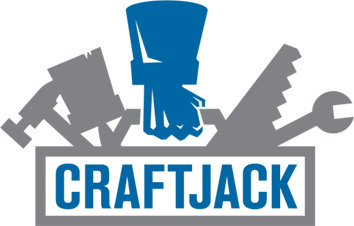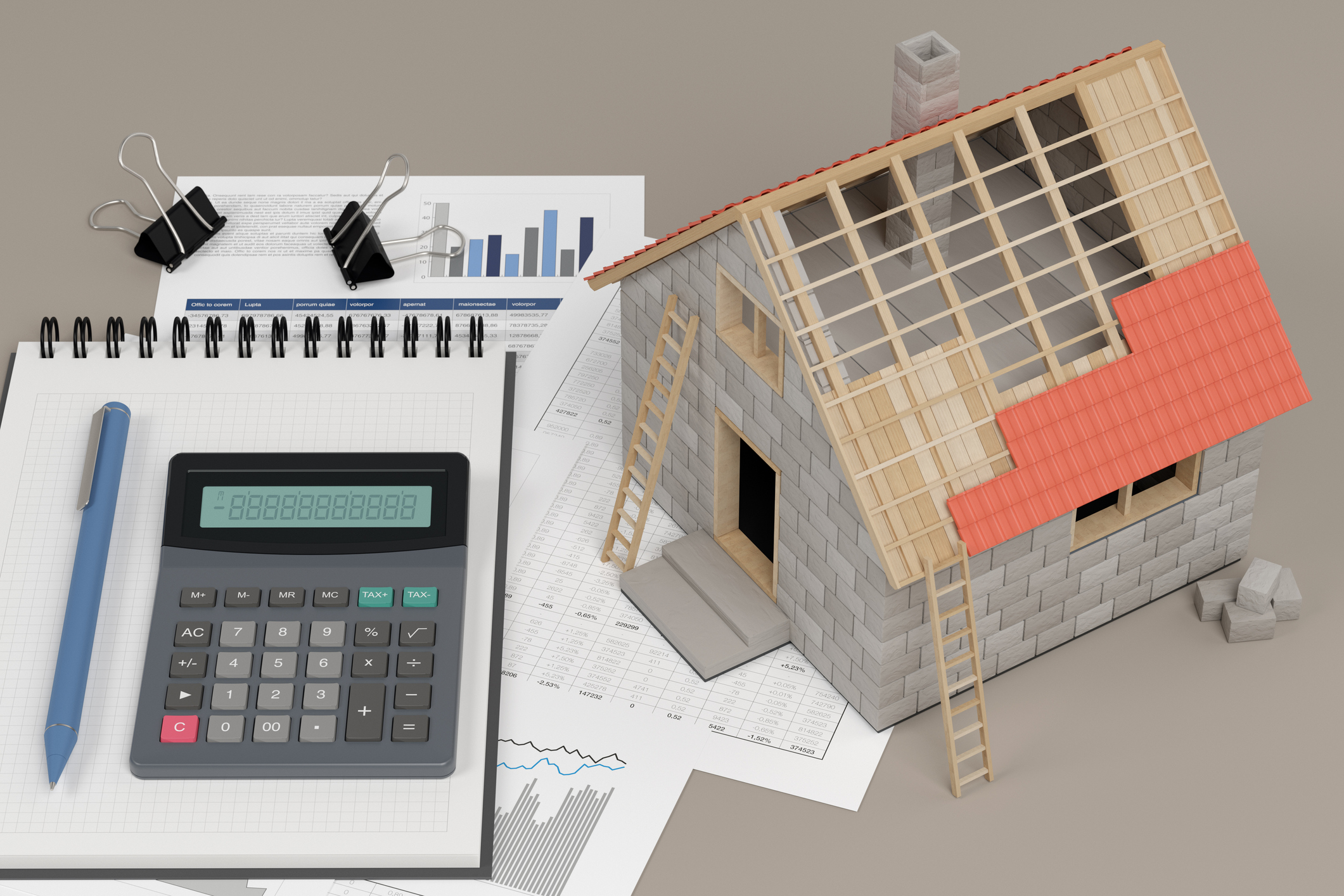Construction Technology Trends | CraftJack
Learn about the latest construction technology trends and how they influence the industry. Contact CraftJack for workable leads to maximize the efficiency these trends provide.

Construction revenue in the United States is in the trillions each year, supported by companies that range from multi-billion dollar corporations to single-team local contractors. As an industry that sees steady annual growth and continued pressure to keep up with increasing demands across the country, construction technology trends tend to focus on improving efficiency and safety, reducing project errors, and increasing sustainability to keep projects running smoothly and protect the future of the industry. Companies and contractors who stay up to date on these trends can adopt the appropriate technologies for their businesses and give themselves an advantage over competition that may still be relying on old processes and standards. Discover 15 construction technology trends that are helping construction professionals streamline their companies in 2023.
Looking for some extra clients to fill out your work calendar but don't have the time to manage the search alone? Start your free Craftjack account to explore a proven lead generation system that lets you focus on serving the clients you have and select from the phone-verified construction leads sent directly to your mobile device.
What Is Causing a Change in the Construction Industry?
Despite being a foundational industry for thriving communities, sustainable change in the construction industry can feel slower than other industries that always seem to remain on the cutting edge of technology and innovation. By its very nature, the construction industry is widespread and hesitant to disrupt its massive market share, measured at $2.8 trillion in 2022. This makes it slower to adopt and roll out new standards and lasting change. This has created significant room in the construction space for technology to prove its benefits, shifting attitudes that were once rooted in traditional methods and practices.
The drive to incorporate mobile solutions and provide remote work opportunities hit every industry during the COVID-19 pandemic, and the construction industry was no exception. Though jobsites are inherently built for social distancing, it was impossible for companies to ignore the benefits that come with streamlining mobile connectivity to create a more collaborative workforce without sacrificing the travel flexibility needed to monitor multiple project sites. Although technological advancements were already making their way into construction processes, pandemic shutdowns truly highlighted the benefits of incorporating new technologies into the workplace while pushing for continued development into those technologies and the invention of new applications.
What Factors Influence Trends in the Construction Industry?
The sheer scale of the construction industry requires that it evolve steadily, adopting new innovations when available and keeping up with the latest standards in safety and project execution. This adaptability can be driven by many factors that present or highlight inefficiencies within the industry, demanding workable solutions to improve the process overall. These factors can shift over time, sometimes repeating, fading away, or remaining over the long term. Repeating and long-term factors typically drive the innovation for technological advancement, but sometimes, the advancements themselves can become change factors. In 2023, drivers of industry change include:
- Increasing material costs
- Continued labor shortages
- Bottom line pressure increase
- Housing shortages
- Advancements in remote and mobile technology
- Sustainability and green construction demands
- Continued push for cloud computing
15 Construction Technology Trends
So, how does all this impact your business, and what advantages are available to construction contractors? Take a look at these 15 construction technology trends emerging or advancing in 2023 and see what integrations can help set you apart from your competition and maximize your company's efficiency.
1. Cloud-Based Collaboration and Mobile Technology
Few technologies provide the same level of impact on the construction industry as mobile connectivity. The integration of mobile applications allows construction professionals to travel between projects at will, always armed with the information they need at their fingertips. Varying sophistication levels of the programs and apps developed can provide additional benefits to daily operations, improving communication between team members, tracking project progress, and making real-time adjustments to current project plans when needed.
The massive amount of storage needed to manage all the necessary data to make this system work is provided in cloud-based systems. The cloud provides easily scalable space to meet the needs of every project on your calendar and allows access to this stored data to anyone on the project who has permission.
2. Virtual and Augmented Reality
Virtual reality (VR) was the first to step onto the construction scene, generating virtual models of projects that allowed relevant professionals an opportunity to visually explore a projection of its completion. This technology provided a way to catch utilization issues in design while giving the contractor a more complete picture of what the client envisioned. Providing an additional data point to compare the ongoing project with expected results improves the ability to catch and correct mistakes before they become costly.
Augmented reality (AR) adds an extra element to this, projecting the image of the completed project directly onto the existing site in front of the user. Now, in addition to visualizing the completed structure, contractors and developers have the ability to see how that structure interacts with its intended environment. AR also offers enhanced safety capabilities, potentially being used to detect hazards on the jobsite and highlighting them to promote awareness to the on-site team.
3. Building Information Modeling (BIM)
BIM programs generate detailed digital representations of the physical and functional elements of structures and then manage these representations to record and track multiple data points to assist with that structure's construction and utilization. BIM capabilities are measured in levels, starting at zero and going as high as six. A level zero would represent a 2D drawing on paper with no collaboration between other professionals. Higher levels begin to include more detailed 3D models of the structure and often include relevant information from collaborating professionals, such as pipe placement for plumbing or electrical wiring maps. These can be used to avoid construction conflict and play with solutions if conflict is found.
For the highest BIM levels, models can include projections of the amount of time needed to complete different areas of the structure, assisting with developing more accurate estimations for different phases. Cost projections can be included to improve budgeting, and energy consumption estimations allow designers to improve efficiency before the construction team even breaks ground.
4. Robotics
The sustained labor shortage has opened the door for inventive use of robotics on construction sites to perform repetitive tasks, handle heavy lifting, assist with precision work, or gather data to improve worksite practices. Current examples of this include TyBot, the rebar-tying robot developed by Advanced Construction Robotics. Having robotic alternatives to handle time-consuming tasks frees up paid laborers to handle elements that require human judgment or are too complex to program into a cost-effective robot.
MULE is another robotics innovation created by Construction Robotics to lift and move heavy materials on jobsites. Another of the company's products, SAM, was developed to take over bricklaying. These robotic options provide the labor needed when there's a shortage of applicants to fill these roles, and they can provide continuous labor throughout the workday without a need for breaks or safety equipment to prevent injury.
5. Autonomous Machinery
While robotics are designed to perform their tasks independently, autonomous machinery covers equipment that still requires some human intervention. Testing for autonomous heavy equipment has been ongoing, and though a fully autonomous machine hasn't been put out into the market yet, many operators are already utilizing autonomous features on the equipment they run. Automatic grading to create flat surfaces is one application that's currently used. Many machines utilize remote diagnostics, or telematics, to measure the performance level of the equipment in real time so adjustments can be made to maximize production.
Although full automation isn't yet a reality, heavy equipment manufacturers are still working on the solutions needed to make this appropriate for construction sites. Some mining equipment is already being used commercially because dig sites are often more permanent in nature, which removes the anomalies of terrain that make construction automation complicated.

6. Prefabrication and Modularization
Prefabrication and modularization have been on the construction scene for hundreds of years, but the processes and materials used today are much more efficient and modernized. Labor shortages and bottom-line concerns force construction companies to look for ways to increase their revenue, and utilizing prefabrication saves significant time when erecting structures, requiring fewer labor hours and often including bulk material discounts. Large pieces of the structure are created off-site and delivered for the construction crew to put together. These pieces can be customized to meet the needs of the current project.
In some cases, entire rooms or modules are constructed before being delivered. This falls under modularization. These modules, such as bathrooms or dorm rooms, are then connected to one another or placed within an existing structure as one unit. Such options improve consistency across projects by handling the bulk of the required labor in a factory-like setting and reduce the impact of adverse weather or human-based project delays by speeding up the entire process.
7. IoT Integration for Advanced Analytics
The Internet of Things (IoT) refers to networks of physical objects that contain software, processors, sensors, or other technologies to exchange data with systems and devices. Incorporating these devices into construction creates a stream of data that can provide valuable insight to contractors and help them make informed decisions regarding almost every element of their projects. Structures, materials, heavy equipment, and machinery can all send data to the central system to provide management with a detailed overview of project performance. A few common applications include evaluating productivity, measuring waste efficiency, and tracking the need for equipment maintenance.
8. Digital Twin Technologies
Like BIM, digital twin technology involves the digital representation of a future or existing structure and often relies on BIM representations to function. However, BIM focuses on construction and design visualization, while digital twins are used to provide virtual interaction to test various assets and find out how they work. If data from IoT sensors is fed into a digital twin, along with information from other technologies, the digital twin becomes the central system that applies this data to the virtual representation. Contractors and future managers of the structure can interact with this model to identify predictive maintenance needs, helping lower downtime and increase productivity.
9. Sustainable Design and Construction
New technologies and newly popular old technologies are being brought to the table to create structures that are designed to last longer and withstand the damage often caused by natural disasters and everyday elements. As record temperatures and storms dominate the headlines, investors and homeowners are reasonably concerned about ensuring the longevity of their construction investment. Advanced materials and construction techniques can improve the life span of structures and even reduce the level of maintenance needed for upkeep in some situations.
Self-healing concrete is one example of these emerging technologies. Concrete is used in most construction projects, but its tendency to crack over time requires someone to detect any signs of deterioration so it can be repaired before seriously threatening the integrity of the structure. Self-healing concrete automatically fills any fractures or gaps, maintaining watertightness and reinstating the strength of the concrete. The result is a concrete option that could extend its own life span up to 13 times the length of traditional concrete, saving construction clients time and money over the life of the structure.
10. Use of Drones
The use of drones in construction isn't new and has been going on for well over a decade, but improved technologies have opened up new applications while increasing the impact of applications already in place. Providing real-time aerial images of proposed and established construction sites, topographical information can be transmitted to BIM programs to more accurately record and display a structure's placement within this space. This technology also improves surveying by speeding up the process and generating more detailed and accurate maps of the location.
11. Advanced Surveying and Geolocation
Whether incorporated into drones or more traditional tools, advancements in geographic information systems and high-definition photography capabilities are greatly increasing the amount of information delivered to generate surveys. More accurate surveys lead to a better understanding of the project site, providing an opportunity to identify incompatible design elements and anticipate environmental hazards or trouble areas. Taking action to rectify these issues before construction begins, or before they become a tangible problem during construction, can save the project money and time by reducing delays or repairs for avoidable mistakes.
Geolocation advancements make it possible to more accurately pinpoint the location of equipment or staff while on the project site, creating a more streamlined logistics system and limiting the delays and expense of missing equipment or reduced labor production. This also allows the contractor to plan large equipment travel more efficiently, minimizing travel time, avoiding difficult areas, and making the most out of the hours the equipment is online.
12. Platform Integration
Traditional business systems in construction involve multiple technologies chosen to integrate in different ways with several databases and multiple vendors. This outdated practice increases training needs for onboarding employees who must understand this complex system and can make it difficult to troubleshoot when there's a problem because it could impact more than one system or process and be hard to locate. Integrated platforms resolve many of these issues by utilizing a customized architecture of connected subsystems that communicate seamlessly and function as one system.
An integrated platform digitizes workflow processes, streamlining them for better efficiency and allowing remote access from multiple users in different locations. This assists with collaboration efforts and provides a scalable model that can be more easily adjusted to fit the new needs of the company as it evolves. The versatility of integrated platforms makes them just as suitable for large international corporations as they are for improving smaller-scale residential construction software applications.
13. Emphasis on Eco-friendliness
Focus on environmental impact has been a hot topic for many industries, and construction companies and manufacturers are seeking out ways to improve their eco-friendliness without sacrificing revenue or productivity. Construction materials that were once thrown out after use are now being repurposed to reduce jobsite waste. Alternative energies, such as solar and wind power, are being utilized to power jobsites that are off the grid. Residential construction contractors are adding energy-efficient techniques and materials into their builds to help homeowners save on their utility bills and cater to the eco-conscious consumer. Most large construction sites also work closely with environmental agencies to ensure the preservation of endangered wildlife or fauna that may be in the area.
14. 3D Printing
3D printing was originally introduced to the construction industry as an improved way to create detailed models of the structures being built, creating a strong visual for the contractors involved with the project. Today, this application has been scaled up to be used in the printing of actual structures. This technology would dramatically reduce the build time of many projects and minimize wasted materials while providing consistent results when repeating multiple builds of the same design. It also allows for greater creativity in structure design, eliminating the limitations often found with traditional materials and erection methods. While still not standard practice in most places due to the higher expense of this newer technology, 3D printing is likely the future of construction and has the potential to revolutionize the industry as it becomes more mainstream.
15. Digital Process Investment
The digital transformation process involves abandoning traditional paper methods in favor of integrable digital solutions. As more construction companies recognize the added efficiency and enhanced collaboration that come with making the switch to digital processes, this will become more common at all levels. Digital workflows allow the rapid sharing and collaboration of the company's operations, ensuring all relevant parties have access to the information they need at any time to support the necessary functions of the business. This can include digitizing the bidding process, jobsite inspections, design reviews, and many other activities needed to keep a project moving and streamline construction soft-cost activities.
Contractors who invest in digital transformation can reduce the opportunity for human error while taking action on data-based insights that improve results. Communication and collaboration are encouraged within these systems, increasing the satisfaction of clients because many conflicts and mistakes are prevented.
Utilizing Construction Technology Trends
Old-school construction companies that prefer to avoid technological advancements still have a place in this world, but these ways are rapidly being phased out in favor of faster, safer, and more efficient systems that improve multiple areas of construction work. Getting an early jump on utilizing these emerging trends offers a competitive advantage to contractors willing to embrace the future, ensuring their companies aren't left behind with outdated processes and unnecessary project delays.
Construction professionals will have more information at their disposal to make better decisions and can avoid many common errors or formerly accepted industry revenue drains that hold back their bottom lines. Completed projects will see an increase in overall quality and a renewed focus on environmental friendliness, leading to better satisfaction from consumers and improving the reputation of an industry that's often been plagued by unnecessary waste. Happy clients and improved profitability are key factors for company growth, creating an opportunity for construction contractors to build on this success and scale their businesses to match their professional goals.
Many construction technology improvements make it possible to manage a higher volume of work at once, so lead generation tools can be another important consideration for maximizing your company's profitability. CraftJack offers a modern lead-generation system for forward-thinking contractors, so contact us today to speak with a dedicated account manager and take advantage of all the tools at your disposal as a CraftJack professional.


